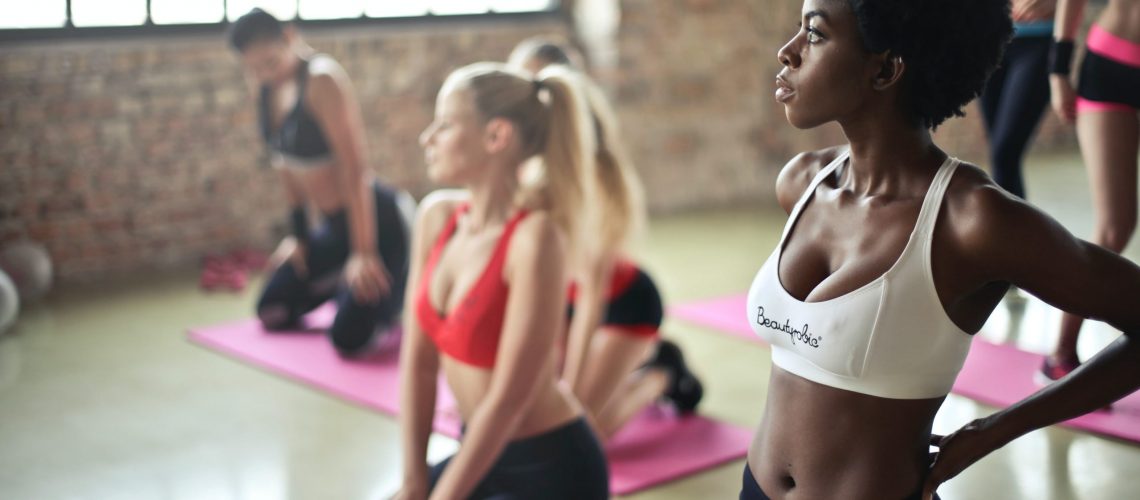I am not a speaker for all people of colour in yoga and, while I know a lot about cultural awareness, I have blind spots – as we all do. I cannot begin to understand what it is like being a black person living in the US right now, I can only empathise and try to connect with those feelings from a place of humility.
I am, however, an expert in my story, my truth and my experiences. And I believe it’s time that everyone who shares my love of yoga calls out the lack of diversity and inclusivity in the practise and takes positive steps to effect true and meaningful change.
I am of Mauritian heritage, although the UK has been my home since I was born. I grew up being one of only a handful of brown people among a sea of otherwise all white faces in my primary school in Manchester in the eighties. At times that was challenging. I am now one of a relatively small group of yoga practitioners of colour in the UK and there is a clear lack of diversity and inclusion at the decision-making table of the UK’s yoga governing body, Yoga Alliance UK. That is challenging, too. Given that yoga is a practise founded by people of colour, it’s also rather surprising.
I first learnt yoga when I was living in India in my early thirties. Back then I had no desire to become a yoga teacher, in fact, such was my reluctance that I had to be dragged along to my first class by a friend. But I quickly found my calling. There, yoga was about physical postures to an extent, but it was also about meditation, about breath, about community and inclusion and about self-reflection. Each class was related back to a particular theme within yoga philosophy and its inescapable links with spirituality (Hinduism, Buddhism and Jainism), albeit in a non-religious, inclusive way.
When I returned to the UK, I went to different classes in different studio spaces, but I found that none of them resembled the yoga I had learnt in India. Teachers were nearly all young white, super flexible females, all slim and bendy and with a focus on the physical postures, often at the expense of everything else. It felt like the true essence of yoga had been airbrushed out – more on that here .
I suddenly felt really alien in a space that had felt so much like home to me during my time in India. I didn’t feel comfortable raising my concerns because I was made to believe that I had got it wrong, that I had got yoga wrong. I was made to feel like ‘the other’ because I hadn’t learnt it in the approved or ‘normal’ way. It makes me really sad that I allowed those feelings to sit with me and didn’t have the confidence to challenge it at the time.
Search #yoga on Instagram and the resulting stream of images is of a homogenous group of white ladies doing very bendy things. You will see very few people of colour and even fewer people practising breath or spirituality or sitting in meditation because it’s not considered to be palatable to a Western audience.
Meditation is about achieving that absolute state of consciousness and awareness that is completely different to a waking state. It’s achieving that stillness of the mind without a single-pointed focus that is completely rejuvenating. Ultimately, meditation is about peeling back the layers of who you are, so that you become more self-aware. Isn’t it ironic, then, that this essential strand of the practise has been white-washed.
I can’t tell you how many times I’ve been told it might be better if I don’t do meditation in my classes, because people just want yoga for the fitness. It’s not uncommon for people to leave at the end of a yoga class in the UK before meditation and relaxation. Whether it is because they don’t have time, they don’t understand the benefit, or they are simply disrespectful, I have no idea.
The ancient Indian sage Patanjali described yoga in the Yoga Sutras (the authoritative text on yoga) as “Yogah chitta vritti nirodhah”, which means the cessation of patterns of consciousness. This never ceases to amaze me because in two-and-a-half millennia it’s stayed the same and we’re only now beginning to understand what he meant.
When it comes to ingrained cultural bias, I’m not responsible for your learning, it has to be something you take on for yourself. It’s your responsibility to educate yourself and not solely through my lens. When it comes to yoga and yogic philosophy, I can point you to the Sanskrit term Svadhyaya which means the study of self and introspection that can help to reduce the filters of how we see ourselves and the world we live in.
It starts with teachers and studio owners. Do you know the diversity make-up of the area where your studio is based? If you are based in an area with an ethnic minority population of 68%, but you don’t have anywhere near 68% minority ethnic people coming through your doors, why is that? Are your teachers reflective of the communities you serve?
Think about what information you are passing on to your students and through what lens they are interpreting it. If you’re going to talk about yogic philosophy, think about who wrote the book you’re quoting from and whether it is a Western or an indigenous voice. If you’re teaching yoga it needs to be from a holistic perspective, not the narrow definition of what yoga means to you or how you were taught.
Think wider. Open the scope of your teaching to include The Eight Limbs of Yoga, not just the physical poses. And when you engage with teachers and students from diverse backgrounds, do so with openness, respect and humility. Remember, always, that we have borrowed this practice from the indigenous people of India and it is a gift. Treat it as such.
What kind of privilege do you have and did you grow up with? As a female I will suffer sexism and as a brown person I will suffer racism. But I also know that as a brown person I am more aligned and acceptable to a white person than maybe I would if I was of Black African or West Indian heritage. I am a cis female (my gender identity matches the sex I was assigned at birth), heterosexual, married, middle class and highly educated to degree level, so I have all the privilege that comes with it.
It’s essential to look inward before we can look outward, so we need to understand our own lens and what privilege filters we have on the world. It can be painful and uncomfortable to strip that back and face our own prejudices and I’ve seen a lot of people struggle with it, myself included.
I guess the difference is this; a white person has the choice to go through this process or not because, either way, their life will continue as it always has. A person of colour occupying the same spaces does not have that choice. We have to confront this uncomfortable feeling of being the outsider and not belonging, because from the day we were born we have always been the ‘other’.
We need to be compassionate with ourselves because I truly believe that no one comes into yoga wanting to cause harm. And with that compassion there needs to come patience, because we’re going to make mistakes. Yet each and every one of us – from students to teachers, practitioners to studio owners – has a responsibility to listen and to learn, to seek out and amplify different voices and to ensure that yoga is inclusive, representative, diverse and free from prejudice. So that no one, ever, feels like an outsider.


